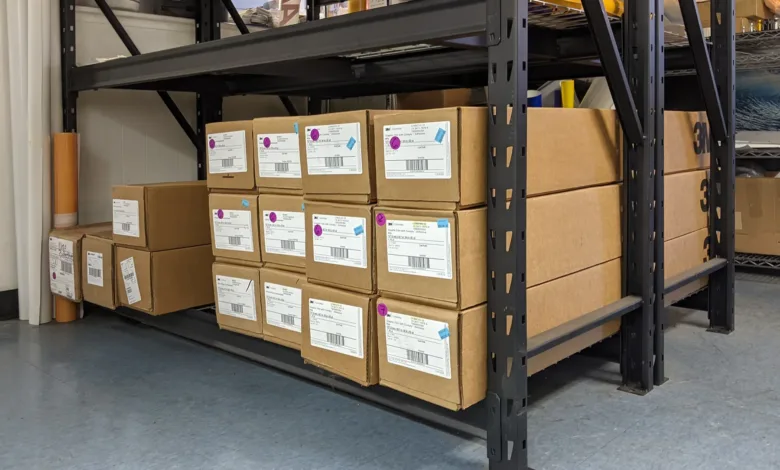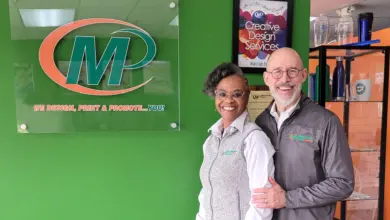
My husband and I both started in the sign industry in production, and while owning the business for 27 years means we’ve learned our fair share of business management, we still work within a production mindset. This means when we’re busy; we hustle, we produce, we install. When we’re slower, we market our outstanding estimates and prep the shop for the next wave of business.
Things like material costs, inventory, supply issues, and labor costs are issues we tackle, but honestly, we don’t consider them as often as we should. We’re too busy thinking about deadlines and production to determine the perfect prices for our products.
The last three years have been our busiest years ever and coupled with the difficulties in getting materials over the previous year and rising material costs, we’ve had to change our mindset quickly. Being busier means the jobs are coming in, but if each project is sold at a smaller profit margin and our labor costs are undercut on each install, then we’re working harder – not smarter.
Inventory
Over the years, we’ve established the materials we like to use – premium wrap vinyl, calendared vinyl, printable reflective and metallic, perforated vinyl, transit vinyl, and the corresponding laminates for each one. We have rolls that we’re currently printing from, and then normally, we would keep one extra roll in stock, maybe two rolls for the premium and transit since we go through them so quickly.
With the supply issues the industry has experienced over the last year, we’ve had to drastically change how we stock our inventory. Early in the year, we ordered a pallet of 3M IJ180 to bring enough stock for our busy schedule. At the time, ordering one or two rolls from suppliers wasn’t an option to get our hands on media, while ordering a pallet from 3M got us the stock we needed.
This has changed as suppliers have been able to replenish their stock a bit, but we still quickly learned to order 3-4 rolls of material for stock when our current inventory would drop to 2-3 rolls. In the past, I could order a roll and have it the next day; now, it’s a toss-up as to whether suppliers will be able to meet our needs.
We’ve quickly learned that we must keep a closer eye on our inventory and supplier stock. For materials you know you’re going to use, I would recommend ordering from a couple of suppliers, and even if it’s not in stock, get it on backorder. That way, when the supplier receives the stock, you’re already on the list to receive it. We’ve had delivery guys show up with rolls we forgot we had even ordered, but it’s been an excellent way to keep the inventory stocked.
Cash flow
Carrying more inventory means that you’re paying out on larger invoices than in the past. Before, we’d have an invoice with 1-2 rolls on it; now, we’re paying double to stay on top of our needs.
As I mentioned before, our sales have been way up the last few years, so we’re going through media faster, which accounts for the need to order so often. This is great for our total sales but makes it even more critical that we’re on top of our profit margins.
Why is it more important? Because the more signs and wraps we sell at higher material costs without adjusting our prices, the more work we’re doing for less profit. That’s not even considering the higher labor costs that have to be considered.
Make sure you’re watching your accounts receivable, too. Having to pay higher prices upfront for materials means that you need to ensure your customers aren’t taking too long to pay their invoices. Our larger, repeat clients have terms, but we require a 50% deposit, balance upon completion for most projects.
Material costs
The only way to know what your material costs are is to sit down and compare them. Create a spreadsheet on the computer or simply on a pad of paper to get all of your prices in one place. You don’t have to overthink the process; you just have to do it.
Start by listing your top suppliers – those you’ve created a good working relationship with and who deliver often. Then add at least 2-3 other suppliers that you can get materials from and determine the prices they can offer you.
Next, make a list of all the materials you currently like to use and want to keep in stock. We have our set material types we stock in the past, but we’ve had to be a bit flexible by trying out other manufacturers to fulfill an order over the last year. I’ll mention more on this later but go ahead and add these materials to your list because it’s essential to consider and compare all the options.
Not only will having your materials listed out help with creating a price sheet that builds in profit, but it will also make it easier for you to order. You might be surprised that a supplier you haven’t been using as often can get you a product at less expensive prices. As a side note, don’t be shy to ask suppliers for price matching or quantity discounts. Many manufacturers have set pricing for their products across suppliers, so you won’t have wiggle room on those, but there are plenty of other products you may be able to get a better rate on, especially if you’re ordering in bulk.
Once you have the manufacturer and materials filled out, go through and add the price for the material from each supplier. Be sure you’re comparing the same roll widths and lengths. We usually stock 54″ rolls of print media, but with how crazy the supply chain has been this last year, we also consider 48″ rolls and shorter lengths when in a pinch. Add these onto your price sheet so you know what your options are at a glance. I’m primarily focusing on print media, but don’t forget your substrates, frames, and consumables like masking tape, squeegees, blades, knifeless tape, and other production costs.
Price sheets
We’ve set up our pricing sheets based on a per square foot price broken down by material type. We also work on a sliding scale, meaning the higher the square footage, the less per square foot a customer pays. This helps cover us on the extra labor that goes into a small project vs. a larger job. Often a small job will take almost as much time setting up, working with the customer, and producing as a larger job.
When you figure out how much you pay for each supplier’s roll of media, you should use the highest price to figure out your square footage pricing. This means that in our current climate, where it’s harder to get media, you’ve considered that you might have to pay a higher price to get a roll. If you’re able to get the same roll at a more competitive price, you’ve made a little more profit instead of having to eat that extra cost.
Don’t forget to consider any shipping costs. This may be a set price from a certain supplier, but often it’s a freight charge that gets added because you need to bring in stock from another location when your local supplier would have it in stock in the past. You could plan for a $50 per roll freight charge, for example. If you take a 48″ or 54″ roll of media x 50 yards and break it down to 600 sq. ft. per roll, then a $50 freight charge is less than .09 cents per square foot. A small amount to add to your bottom line to make sure you’re covered.
Labor costs
We recently quoted a full wrap project for three Mercedes Sprinters. The customer had previously had a few vehicles wrapped in Texas, but these vehicles are here local. He wanted to know if we could compete with the Texas pricing, which was significantly lower than ours – the short answer was “no, I can’t touch their pricing.” After explaining this and offering a percent discount on our prices for ordering all three, we’re still doing the wraps.
Even if we’re both paying the same price for supplies, our labor costs are very different. Texas’ basic minimum wage is $7.25 per hour, while California’s basic minimum wage is $13 per hour. Finding employees with experience has been a significant struggle. It took us over a year to find the most recent employee we hired. We’re starting out at $16 per hour for anyone with base knowledge and quickly raising them up from there.
These labor costs must be covered somewhere, which means they need to be factored into our shop overhead and hourly labor rates. We’re a small shop, so we can’t get competitive prices on medical, so we try to be competitive in other areas like paid vacation, holiday pay, and sick pay. All of this has to be factored in as well.
Materials
It’s important to note that when trying out different media to fill orders, you must note the materials used on the customer’s paperwork and keep a color sample on file. Materials will have a different white point, and the colors may appear differently. If you must repair or replace panels in the future, you should know what material you’ve used on the job as well.
Be sure you’re not compromising quality to get a job done. Check durability, product warranties, and consider ease of use, so your labor isn’t affected too.




